While I usually recommend relaxing about what we feed our kids, it is important to pay attention to the foods that can be choking hazards for toddlers—and how to prevent toddler choking at meals and snacks.
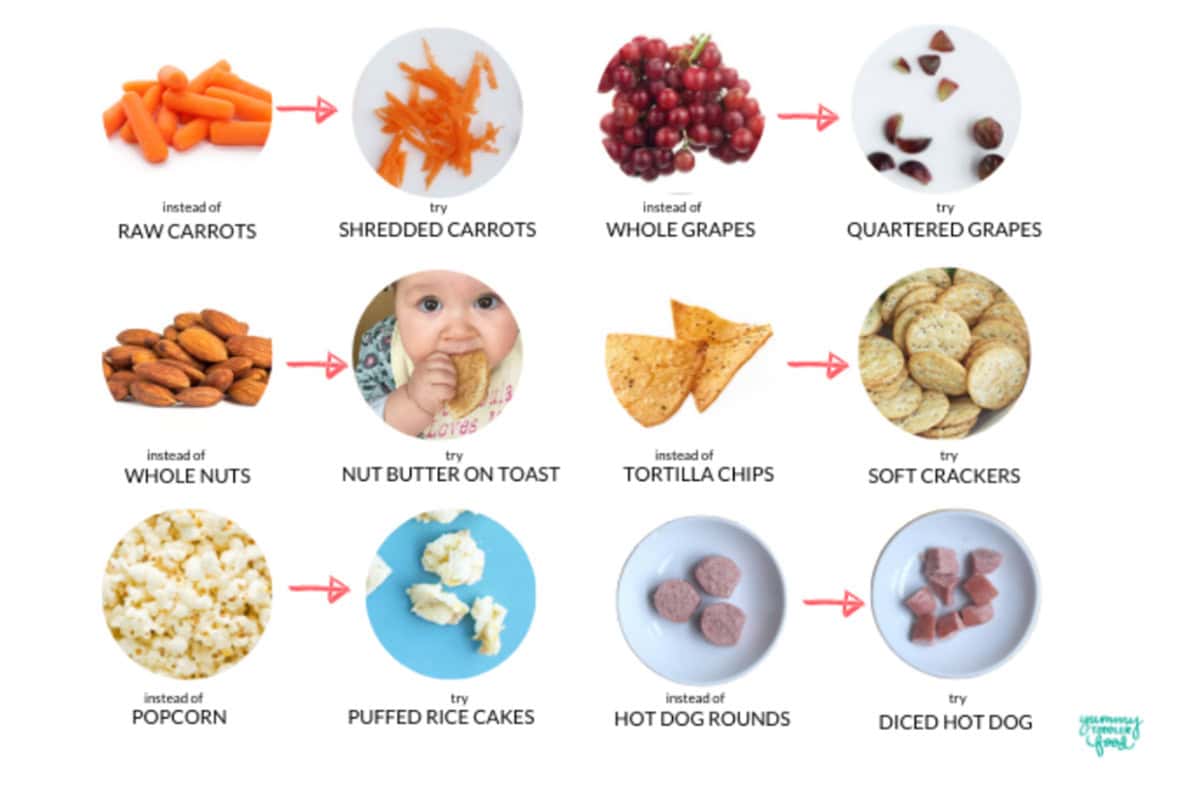
How to Prevent Toddler Choking
We did baby-led weaning foods in our house, so I was always pretty comfortable with letting my girls try new foods. That said, it was clear to me from the start that there are some textures and foods that are just plain tricky for little kids to handle. And then when my oldest was three, she got a small piece of tortilla chip stuck in her throat because she didn’t chew it well.
She didn’t choke per say, but she was wildly uncomfortable and scared—and that was all I needed to be much stricter about choking hazards for toddlers.
TIP: Get a discount to an infant CPR course in my free Resource Library.
Table of Contents
Your toddler won’t eat? Help is here!
Sign up for our email updates to get tips and ideas sent to your inbox.
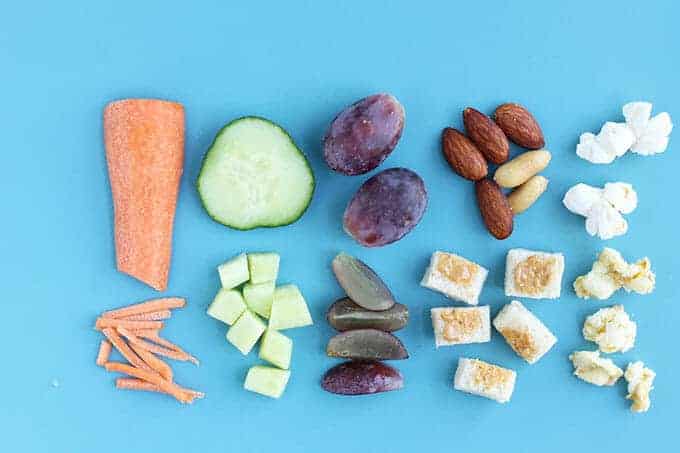
Foods that May be Choking Hazards for Toddlers
Here’s a run down of the common foods that are potentially problematic for little kids, but that can often be served in safer ways. These are the ones I pay most attention to for kids under 4, though do keep in mind the chewing ability and tendencies of your own child when serving any other foods.
For example, if your toddler has a habit of stuffing a lot of food into their mouths, consider offering much smaller amounts of food at a time to help them learn to pace themselves.
1. Hot dogs
This food is round and could potentially get stuck in a throat when sliced and served in rounds. Be sure to chop into smaller pieces—at least cut each round slice in half and possibly in half again.
2. Whole nuts
Almonds, peanut, cashews, and more are hard to chew and can have sharp edges. Avoid them and opt for safer versions like nut or seed butter spread on lightly toasted bread or incorporated into a smoothie or oatmeal. Read more about how to safely serve nuts to kids.
3. Whole grapes
Whole grapes are another round food that has the potential to get stuck in a toddler’s throat, so slice them vertically in half or quarters (do quarters for very large ones) so that the pieces are long and skinny and easy to chew.
(Find more on grapes for kids.)
4. Popcorn
Kernels of popcorn can be difficult to chew completely and it’s very dry, both of which make it hard to chew and swallow effectively. Rice cakes or puffed popcorn cakes can be better options for older toddlers who enjoy crunch. Read more about when kids can have popcorn.
5. Crunchy snack foods
This is one that you’ll need to use your judgement on, but for toddlers under two, I’ve seem some issues chewing foods that can have hard edges like pretzels and some crackers. Opt for softer versions of these when you can and when in doubt, chew one yourself first. I suggest holding off on tortilla chips until 4 if possible too based on my own experience. (Both of my girls got one stuck in their throats at age 3, which turned out to be okay but was very, very uncomfortable and scary for them.)
(Find more resources on healthy snacks for kids.)
6. Sticky and hard foods (like candy and gum)
Gummy candy, some gummy vitamins, taffy, gum and the like are really hard to chew and should be avoided. Also avoid hard candies that are meant to be sucked on as little kids can’t quite grasp that concept and can swallow them whole. You should also avoid straight spoonfuls of nut butter for younger toddlers (and babies) since they can sometimes be hard for toddlers to move around in their mouths.
You can always make Peanut Butter Puree, which is thinned with a little water, if your toddler likes nut butter from a spoon!
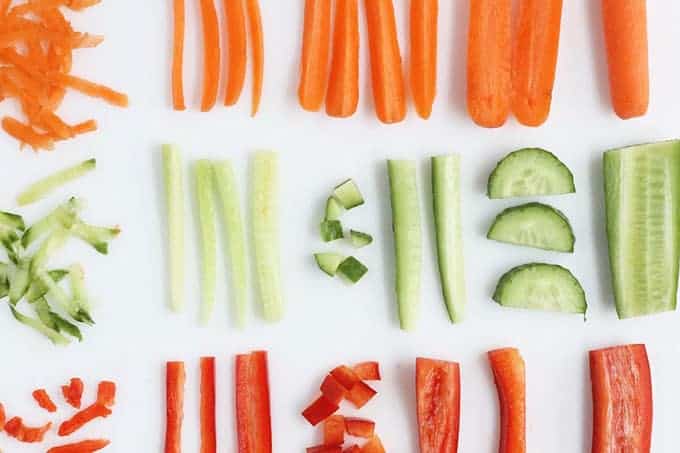
7. Raw vegetables
Raw veggies like carrot sticks, celery sticks, apple slices, cucumber slices, and other raw and harder produce can be really hard for little kids to chew. You can always shred them (try shredded carrots closer to 18 months or 2), choose softer varieties of apples (like Gala) and slice them super thin), or simply go with steamed or lightly cooked versions of these foods to be safe.
Peeling cucumbers can help too—try them in long sticks for younger toddlers to chew on and cubes for older toddlers. With the graphic above, start on the left and work towards the right as the kids get more comfortable chewing. (Find more about how to cut foods for toddlers.)
8. Chunks of meat
Cubes or thin slices of steak, cubes of grilled chicken or turkey can be really hard to chew, even for adults. Try shredded or ground and cooked meat instead, or healthy meatballs which are softer.
9. Chunks of cheese
I have two kids who love cheese so this is something I figured out early on. Opt for shredded cheese (this is great for babies!), crumbled cheese, or very, very small cubes about the size of a pea versus handing over a whole cheese stick to a one year old.
(Find more resources on cheese for babies.)
10. Bread
Until a child is over 1 and often until they’re closer to two, cubes or sticks of bread are easy to get stuck on the roof of their mouths. Try bread lightly toasted and in very small pieces. And cut foods like pancakes and muffins into small cubes too—and offer a drink with these foods.
(Find more resources on bread for babies.)
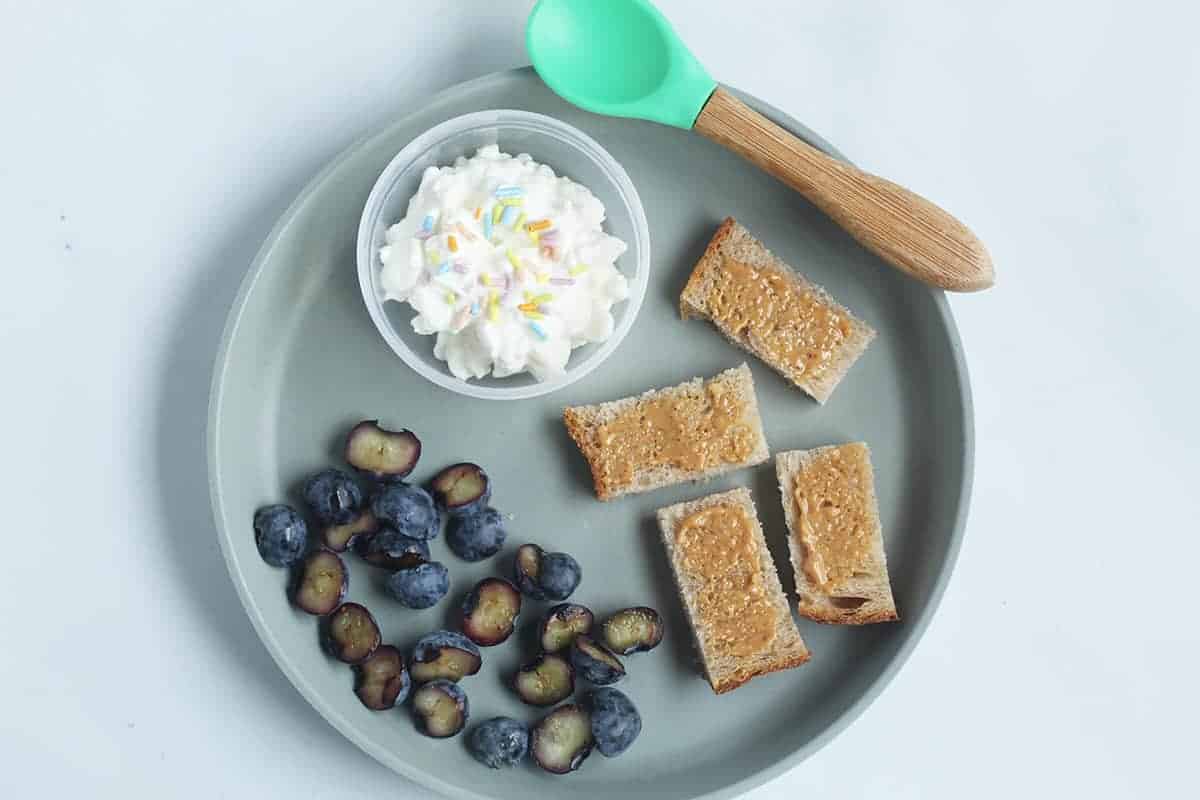
How to Prevent Toddler Choking During Meals
These simple tips can help keep the kids safe at mealtime.
1. Sit with them during meals.
Not every meal may be a family meal, but toddlers still need your attention when they are eating—both so they can learn manners and proper table behavior, and so you are right there if they have trouble eating something.
2. Make them sit down to eat.
Eating while sitting down is an easy way to lessen the likelihood of choking for kids of any age. So avoid feeding them while they are playing or running around as that will make it harder for them to have complete control over the food in their mouth.
A toddler high chair or toddler booster seat for the table can help.
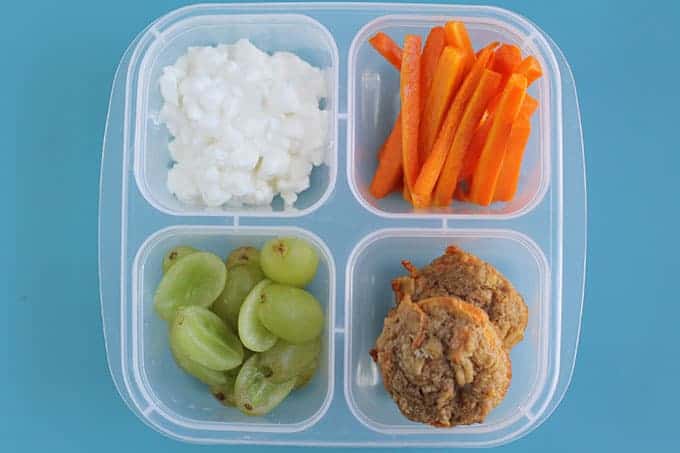
3. Try a new food at home before sending it to daycare.
Because you want to make sure they do okay with it first while you can pay close attention to them. (Find more tips on trying new foods.)
4. Consider skipping super crunchy foods until 3 or 4.
Toddlers like to do everything fast, which means that they don’t always chew foods thoroughly. They also like to do everything that they see us grownups or their older siblings doing, so try to offer them alternatives if you have tortilla chips, very crunchy crackers, or popcorn on the table—or just save those foods for after bedtime or during nap. (We like Snap Pea Crisps as an alternative to crunchy chips!)
5. Offer water with meals and snacks.
Having a drink of water nearby while the kids are eating can help ensure that they have the liquid they need to move food around in their mouths.
6. Follow your gut.
If you’re worried about something like say, whole blueberries,, take the extra moment to serve it in a safer way. This doesn’t have to be an all consuming thing when feeding toddlers, but a few simple precautions can go a long way. How well kids do with certain foods can vary a lot from kid to kid, so pay attention to yours and adjust as needed.
Sources: Unity Point Health and Nationwide Children’s Hospital.
Related Recipes
Starting Solids
Baby Food Chart: BLW, Purees, Finger Foods
Starting Solids
Best Early Finger Foods for Baby
Baby Food
Master List of Baby Snacks
I’d love to hear any additional questions you have on this topic, so please comment below to ask or offer feedback!
This first was originally published October 2020.
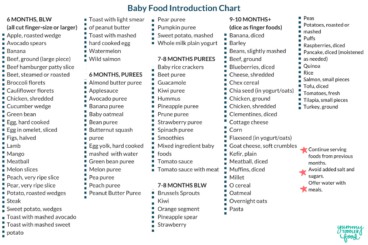
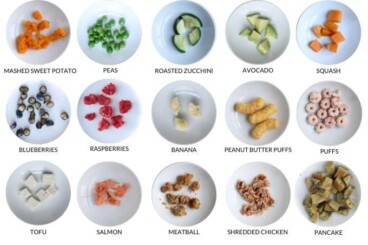
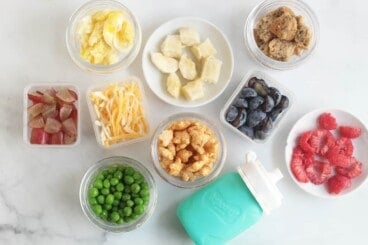

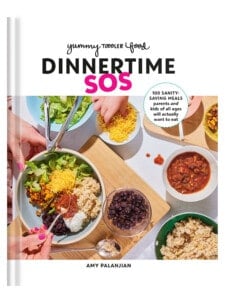
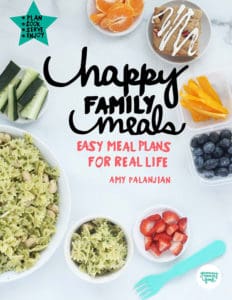
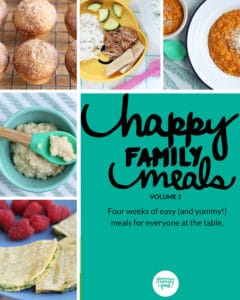
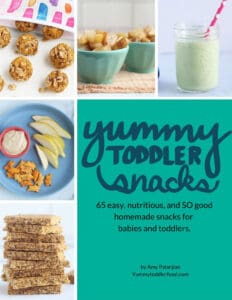














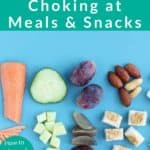
My husband gets upset and disciplines our 2 year old when he takes big bites of cereal or other foods. I understand the importance of preventing choking and teaching him to take smaller bites. But I’m worried this is making my son a picky eater.
Is there a way to talk to him about ways to show your son how to take smaller bites? This shouldn’t be a place to discipline, but a place to teach and model over and over as this takes time for kids to learn.
I cut things into small triangles, like cheese, apples, potatoes etc. I also took a cpr and first aid course and have a choking device in kitchen and in car. I also feel like my son puts too much in his mouth so I have been really trying to work with him on that. For fruit snacks and M&Ms trying to reiterate the 1 at a time rule.
Thank you so much for posting this. I take care of my great grandson and meal time is so stressful for me. My biggest fear is that he will choke! This is so helpful for me!
My daughter-in-law believes that slivered raw almonds are a choking hazard for her 24-month-old son. I can’t find anything to substantiate that fear; they seem quite soft and chewable, and he has no problem chewing his food. What do you think?
It depends—some slivered almonds (in my experience) are quite thickly cut and they could be hard to chew but I wouldn’t consider them to be a choking hazard since they are not a shape that is likely to get stuck in his throat. If anything, he may have a hard time chewing them and would need to spit them out. I would try one sliver, with him sitting down, and see how he does. It should be pretty clear if he’s able to chew it or not if you’re sitting and watching him. (Sliced almonds would be an easier option since they are thinner.)
Even if slivered almonds are not a serious hazard.
I say this as a form of encouragement not to fuss.
I would suggest that you honor your daughter in laws concern. She needs to be able to trust that you respect her opinion on what to feed her child. That mutual respect makes for loving relationships.
This is great! but I think you may have a typo in #6 about nut butter.
thank you!
I fixed it, thank you!
Where is info on candy?? Whether we like it or not, most children will have had some sort of candy before they’re 4 years old. Not sure how they’re made these days but Ring Pops were a big problem at one time. Maybe they’re made so the candy part can’t separate from the plastic it’s attached to?
And I’m sure there are many other types of candy children shouldn’t have because of potential choking
hazard.
I’m just surprised candy was not mentioned here
Thank you for that feedback. I did have sticky candy like taffy and gummy candy mentioned, but I added a little more detail to make it more clear.
This is such a scary thought so been informed and prepared is a must. Thanks for sharing !
So many great tips to watch out for with littles. It feels a little overwhelming when they are first starting to try, thanks for breaking it down!
Food is good for health. All food items are very yummy & tasty. For kids habit like lot of food stuffing in mouth and enjoying every taste of all food items.